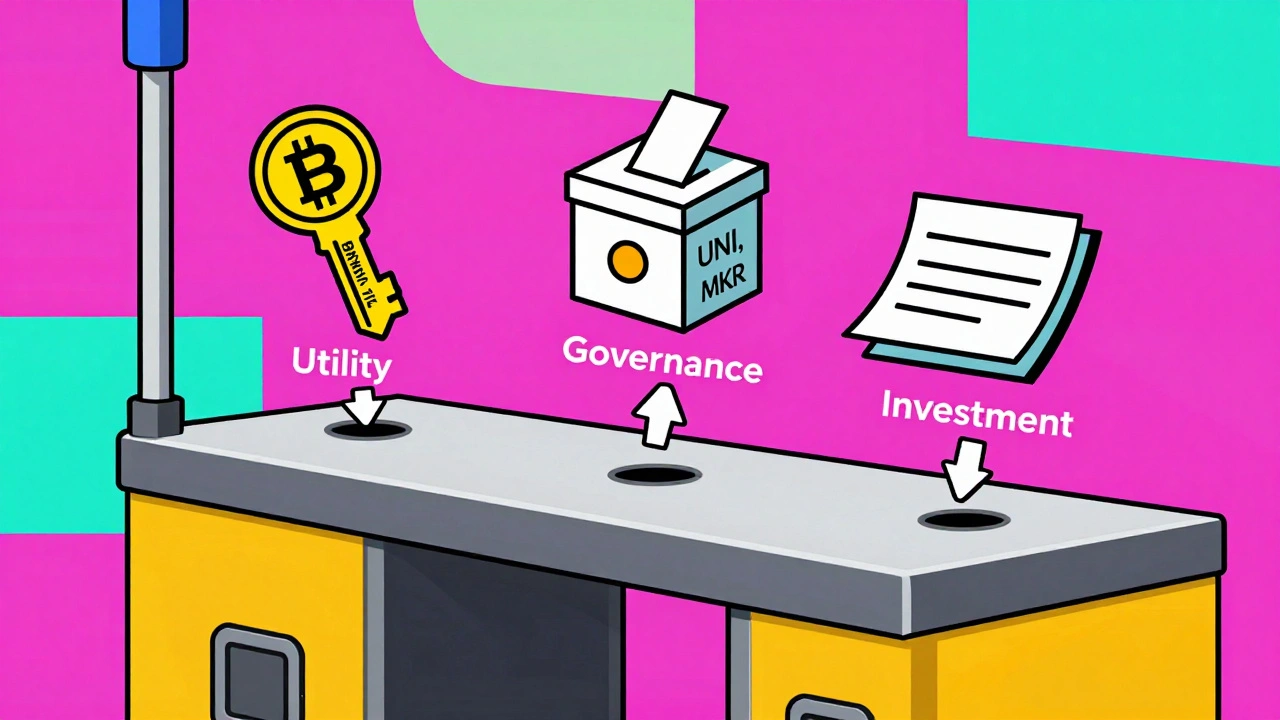Cryptocurrency: A Practical Guide to the Digital Money Landscape
When working with Cryptocurrency, digital assets secured by cryptography that operate without a central bank. Also known as crypto, it enables peer‑to‑peer value transfer across the internet, you’re actually stepping into a broader Blockchain, a distributed ledger that records every transaction in immutable blocks. One of the biggest platforms on this ledger is Ethereum, a programmable blockchain that runs smart contracts. Within Ethereum, MEV (Miner Extractable Value) refers to the profit miners can capture by reordering, inserting, or censoring transactions. In short, Cryptocurrency encompasses blockchain technology, includes Ethereum as a leading network, and is shaped by MEV dynamics that affect transaction ordering.
People jump into cryptocurrency because it promises faster, cheaper payments and new ways to earn online. You’ll hear terms like “smart contracts,” “decentralized finance,” and “token swapping” tossed around, but the core idea stays simple: move value without a middleman. That simplicity is what fuels the rapid growth we see in markets and why “crypto” feels both exciting and a bit confusing at first.
MEV, often called miner extractable value, is more than a technical footnote—it directly impacts the cost you pay when you send a transaction. When miners prioritize certain trades, you might see higher fees or slower confirmations. Understanding how MEV works helps you choose better gas strategies, like setting appropriate fees or using privacy‑preserving tools that hide your transaction details until they’re mined.
Beyond MEV, the Ethereum ecosystem showcases a slate of applications that run on its blockchain. Decentralized finance (DeFi) protocols let you lend, borrow, or earn interest without a bank, while non‑fungible tokens (NFTs) let creators tokenize art, music, or virtual land. All these services rely on the same underlying principles of trust‑less code execution that Ethereum introduced.
Security is a frequent worry, and rightfully so. Your private keys are the only thing that controls your crypto holdings, so using hardware wallets or reputable software wallets is a must. Also, be wary of phishing sites that mimic popular exchanges—once you hand over your seed phrase, the money is gone.
Current trends show a push toward scalability. Layer‑2 solutions like Optimism and Arbitrum bundle many transactions together, cutting fees and speeding up confirmations. Meanwhile, upgrades to Ethereum’s core, such as the shift to proof‑of‑stake, aim to reduce energy consumption and further lower costs.
Below you’ll find a hand‑picked collection of articles that dig deeper into these topics. For instance, our guide on Understanding MEV in Ethereum: A Complete Guide breaks down how front‑running works and what tools you can use to protect yourself. Whether you’re a beginner curious about how crypto works or an experienced user looking for the latest optimization tricks, the posts ahead cover the full spectrum.

Advertising Rules for Crypto: Disclosures and Jurisdictions
Crypto advertising rules vary wildly by platform and country. Learn the exact disclosures required by Google, Meta, and X in 2025, plus how U.S. state laws and global regulations like MiCA impact your campaigns.

Tax-Loss Harvesting in Crypto: How to Offset Gains and Lower Your Tax Bill
Learn how to use crypto tax-loss harvesting to legally offset capital gains, reduce your tax bill, and reset your cost basis-without giving up your investments. Works even if you still believe in the asset.

Stablecoin Pairs in Crypto Trading: How to Reduce Volatility Exposure
Stablecoin pairs like BTC/USDT let crypto traders avoid volatility without leaving the market. Learn how USDC, USDT, and DAI work, which pairs to use, and how to protect your portfolio from crashes.

Blockchain Forks Explained: Soft Forks, Hard Forks, and Chain Splits in Cryptocurrency
Learn how soft forks, hard forks, and chain splits work in cryptocurrency. Understand what happens to your coins during a fork, why they occur, and how to stay safe.

Ethereum Account Abstraction: How ERC-4337 and Smart Wallets Are Changing Crypto Access
ERC-4337 enables smart contract wallets on Ethereum, letting users pay gas in tokens, recover accounts socially, and batch transactions-without needing private keys. Here's how it works and why it matters.

Utility vs Governance vs Investment Tokens: What They Really Do and How They Differ
Utility, governance, and investment tokens serve completely different roles in blockchain. One gives you access, another gives you votes, and the third gives you ownership. Understand the difference before you buy.

Token Unlock Calendars for Altcoins: How They Move Prices and What to Do About It
Token unlocks can crash altcoin prices if not tracked properly. Learn how unlock size, timing, and recipient type affect market movement-and what to do before, during, and after the event.

NFT Tax Rules 2025: How Digital Art Is Classified as Collectibles vs. Standard Capital Gains
NFT tax rules in 2025 treat digital art as either standard capital assets or collectibles-with tax rates jumping from 20% to 28%. Learn how the IRS classifies your NFTs, what records to keep, and how to avoid costly penalties.

Multi-SIP Strategy in India: How to Invest in Multiple Mutual Funds at Once
Learn how to build wealth in India using a multi-SIP strategy - investing in multiple mutual funds at once to reduce risk and boost long-term returns without timing the market.

Cryptocurrency Regulation: Current Status by Country in 2025
As of 2025, cryptocurrency regulation varies widely by country - from the EU's unified MiCA rules to India's 30% tax and China's full ban. Learn how different nations are shaping the future of digital assets.

Market Capitalization in India: Large-Cap, Mid-Cap, and Small-Cap Stocks Explained
Understand how market capitalization works in India's stock market with clear breakdowns of large-cap, mid-cap, and small-cap stocks. Learn how to build a balanced portfolio based on risk and growth goals.

Understanding F&O in India: Futures and Options Basics for Equity Traders
Learn the basics of Futures and Options trading in India - how they work, key differences, common mistakes, and how to start safely without losing money. Perfect for equity traders new to derivatives.
Categories
- Cryptocurrency
- hire domestic help in Mumbai
- Careers & Education
- Home & Living
- hire drivers in mumbai
- Home & Lifestyle
- Technology
- hire pet care in mumbai
- Travel & Transportation
- Health & Fitness
